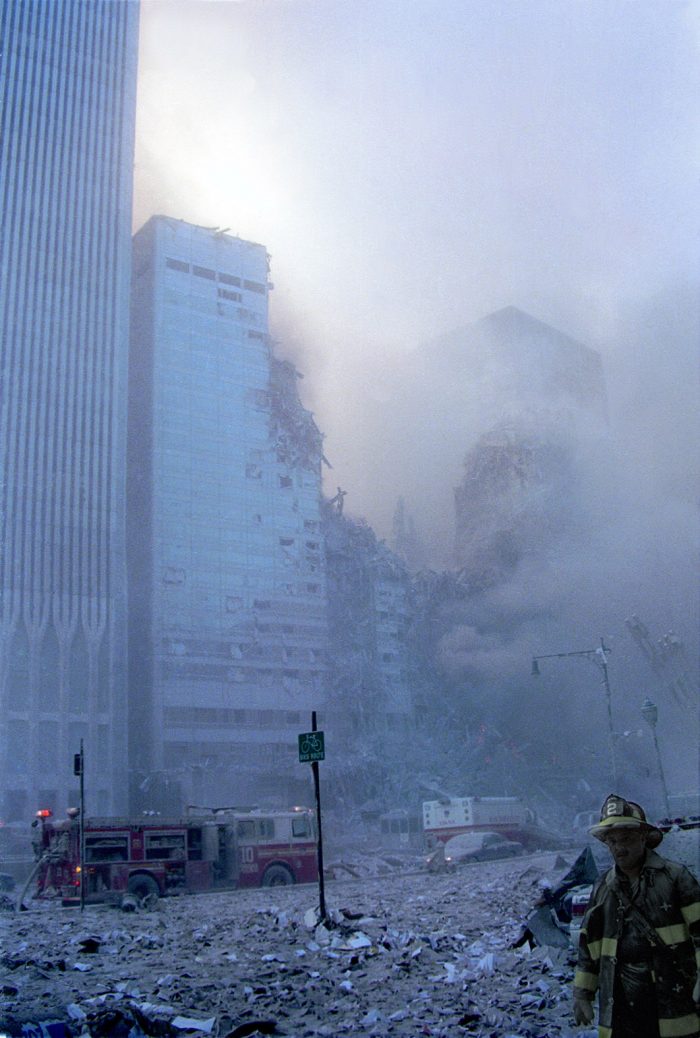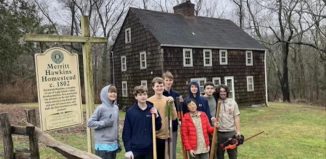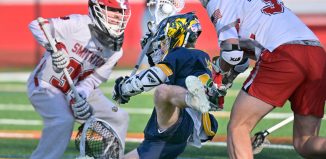Memories of living in Manhattan the days after the 9/11 attacks

With our 4-month-old daughter in a stroller, we followed the same path so many others did in the days after 9/11. We ventured to the nearest fire station, on East 85th Street in Manhattan, where several members of the rescue squad had died racing to the burning World Trade Center towers.

We passed the familiar posters with the faces of people missing after that day, taped to almost every telephone pole, fence and door by relatives desperate for a miracle.
People had covered a car on the same block as the fire station with so many flowers that it was difficult to see the car’s original color.
Slowing our pace, we reached the station where larger-than-life pictures of the faces of firefighters served as a memorial.
Firefighters at the station greeted their guests with grace and dignity, talking about their fallen comrades, accepting the food neighbors had purchased or cooked, and taking other tokens of appreciation and expressions of shared grief. The car covered in flowers belonged to one of the rescue workers killed that day.
Some of the visitors lost the battle to control their runaway emotions, struggling to offer comfort through their tears. The firefighters comforted them, thanking them for coming and offering something to the effect of “I appreciate your visit” and “I know what you mean.”
When it was our turn to speak, we offered some version of our thanks, handing a gift to the people who would continue to risk their lives to protect people in the neighborhood.
The weeks that followed the attacks were a blur, with images of the then-heroic Mayor Rudy Giuliani (R) demonstrating defiance and resilience on TV interspersed with hard-to-breathe moments when parts of the towers passed us on the roads as the city cleaned up the site.
Among the 2,606 people who died at the WTC — then or later from injuries — I thought about the ones I knew well.
A financial services reporter for several years, I regularly called analysts at the boutique investment bank Keefe, Bruyette & Woods. I frequently chatted with three of them in particular: Marni Pont O’Doherty, Tom Theurkauf Jr. and David Berry.
While he was often in a hurry, Tom never ended a conversation without his familiar, “Good to talk.” Two decades later, I can still hear his energetic and respectful signoff.
David shared quotes and insights without changing his pitch, tolerating ridiculous questions and challenging what I thought I knew.
A self-described “banking nerd,” Marni loved her job. I called her with all kinds of rumors about bank mergers and she never discounted any possibility. She would tell me why something might make sense. Often she would conclude by saying she wasn’t making the decisions and that bank executives had done stranger things.
They were three of the 67 people who lost their lives at KBW.
In the weeks after the attacks, an eerie graciousness fell over a city where verbal confrontation is a way of life. As we walked or drove through the city, we didn’t hear any car horns. A light would turn green and every car would wait for the people, who might be mourning a loss, to go.
Everyone, however, didn’t come together then, just as people across the political aisle today rarely come together.
Indeed, with attacks and hostility toward Middle Easterners rising in the weeks after the attack, numerous taxi and limo drivers attached bumper stickers to their cars, indicating that they were proud Americans or that they were, say, Sikh Americans.
The flyers eventually came down or blew off poles and crosswalk signs, the trucks stopped hauling beams and other pieces of the towers, and drivers honked again.
In the 20 years since, I have tried to balance between appreciating the privilege of knowing Marni, Tom, David and others and the agony of realizing all that they, and their families, lost. They weren’t my best friends or my family, but they were — and continue to be — missed and remembered. And, thank you, Tom. It was “good to talk.”
Daniel Dunaief writes a weekly science feature called the Power of Three and a weekly column called None of the Above for TBR News Media.






